20D.40.30 Building Design Standards.
20D.40.30-010 Purpose.
The purpose of this section is to establish criteria for building design and review that addresses architectural concepts, building scale, details, materials, colors, blank wall treatment, pedestrian features, and personal safety. (Ord. 1993)
20D.40.30-020 Architectural Concepts.
(1) Intent.
(a) To ensure building design is based on a strong, unified, coherent architectural concept;
(b) To ensure that buildings portray a sense of high architectural integrity, successfully building upon classical or traditional themes, practices and principles;
(c) To ensure that new buildings are appropriately designed for the site, address human scale, and become a positive element in the architectural character of the neighborhood;
(d) To ensure that new buildings use high quality building materials and architectural finishes in a manner that exemplifies craftsman quality and durability;
(e) To ensure that new buildings are aesthetically pleasing and superior in design, while not being ostentatious, trendy, cliche, or monotonous.
(2) Design Criteria.
(a) Building design should support the vision for the area as defined in the Comprehensive Plan, development regulations and the Design Review Handbooks.
(b) The architectural composition, scale, elements, and details of a building should relate to the site’s natural features and the character of the surrounding area. A strong architectural concept will indicate this organizational scheme, and convey the project’s architectural character, or the style of the development. The concept should incorporate the following:
(i) Building Orientation. Buildings may be oriented around a courtyard, be terraced down a hillside, or respond in design to a prominent feature, such as a corner location, a street or the river. Windows, breezeways and common areas should be oriented toward shorelines, scenic views, or natural or recreational amenities on the site. Buildings and site design should provide inviting entry orientation. Water-enjoyment uses located adjacent to the shoreline should incorporate substantial areas of windows and outdoor seating areas and walkways oriented toward the shoreline. Outdoor use areas should include attractive landscaping, lighting and street furniture. Buildings should not turn their backs to the street or to shoreline public access areas.
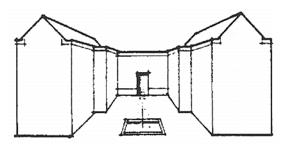
Figure 24: Architectural Concepts Design Criteria (2)(b)(i) of this section, Building Orientation.
Organization around a central exterior space, such as a courtyard or garden, is an effective way to organize a site for some uses, and create an amenity.
Figure 25: Architectural Concepts Design Criteria (2)(b)(i) of this section, Building Orientation.
Terracing, dividing a building into horizontal terraces that step down a steep slope is a way to respond appropriately to site conditions. This organization also allows for decks and balconies.
(ii) Architectural Composition. The composition of a building’s larger masses and elements can create a unifying concept. Types of composition or design are symmetry and asymmetry, organization around an axis or approach, in a linear fashion or on a grid. The composition should be clear and appropriate to the building’s function and context.
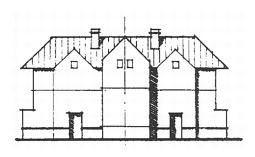
Figure 26: Architectural Concepts Design Criteria (2)(b)(ii) of this section, Architectural Composition.
Axial symmetry is a formal design organization in which the building elements on one side of the centerline axis are the same as on the other side.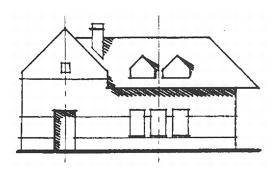
Figure 27: Architectural Concepts Design Criteria (2)(b)(ii) of this section, Architectural Composition.
Asymmetry is an informal composition in which larger design elements are often visually balanced by a number of smaller elements within the composition.
(iii) Building Scale. The apparent mass and scale of large buildings can be reduced through the use of modulation and articulation that provides a pedestrian scale and architectural interest. Height and modulation should reflect natural features and views. The building envelope shall be designed to maintain shoreline view corridors from the site and nearby properties. (See also RCDG 20D.40.30-030, Building Scale.)
(iv) Building Elements. Distinctive roof forms, entrances, an arcade or porch, or the articulation or arrangement of doors and windows or other building features can provide for compositional unity and convey a strong architectural concept. (See also RCDG 20D.40.30-030, Building Scale.)
Figure 28: Architectural Concepts Design Criteria (2)(b)(iv) of this section, Elements.
Inclusion of a major architectural feature, such as a turret, portico, or arcade, can provide a strong focus or unifying element in a building design.
(v) Building Details, Materials, and Colors. Moldings, mullions, rooftop features, materials, and colors can display a distinctive architectural style. (See also RCDG 20D.40.30-040, Building Details, Materials, and Colors.) (Ord. 2486; Ord. 1993)
20D.40.30-030 Building Scale.
(1) Intent.
(a) To ensure new development is compatible with the goals for the neighborhood and with the architectural scale (the scale of the building(s) in relation to surrounding development) and character of those surrounding developments that meet the intent of the City’s design review criteria;
(b) To ensure buildings are based on human scale (the scale of the building and how it relates to the people that use it);
(c) To ensure that large buildings reduce their apparent mass and bulk on the elevations visible from streets or pedestrian routes through such methods as facade modulation and architectural detailing, roof treatment, colors, materials, and other special features.
(2) Design Criteria.
(a) Integration. Large buildings should integrate features along their facades visible from the public right-of-way and pedestrian routes and entries to reduce the apparent building mass and achieve an architectural scale consistent with other nearby structures.
(b) Facade Modulation. Building facades visible from public streets and public spaces should be stepped back or projected forward at intervals to provide a minimum of 40 percent facade modulation. The minimum depth of modulation should be one foot and the minimum width shall be five feet.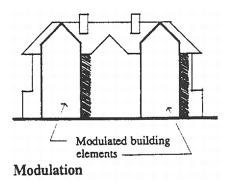
Figure 29: Building Scale Criteria (2)(b) of this section.
Modulation is a stepping back or projecting forward of the facade in intervals.
Figure 30: Building Scale Design Criteria (2)(b) of this section.
Facade modulation and pitched roofs help reduce the apparent bulk of this building.
(c) Articulation. Buildings shall be articulated to reduce the apparent scale of buildings. Architectural details that are used to articulate the structure may include reveals, battens, and other three dimensional details that create shadow lines and break up the flat surfaces of the facade. The following are ways to achieve building articulation:
(i) Tripartite Articulation. Provide tripartite building articulation (building top, middle, and base) to provide pedestrian-scale and architectural interest.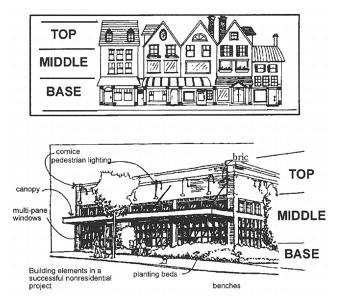
Figure 31: Building Scale Criteria (2)(c)(i) of this section.
Examples of tripartite articulation (top, middle, base).
Figure 32: Building Scale Criteria (2)(c)(i), (2)(c)(ii) and (2)(c)(iv) of this section.
Articulation can be achieved with other building elements such as the roofline, windows and entries.
(ii) Window Treatments. Provide ample articulated window treatments in facades visible from streets and public spaces for architectural interest and human scale. Windows should be articulated with mullions, recesses, etc., as well as applying complementary articulation around doorways and balconies. (See also RCDG 20D.40.30-040, Building Details, Materials and Colors).
(iii) Architectural Elements. The mass of long or large scale buildings can be made more visually interesting by incorporating architectural elements, such as arcades, balconies, bay windows, dormers, and/or columns. (See also RCDG 20D.40.30-040, Building Details, Materials and Colors).
(iv) Rooflines. A distinctive roofline can reduce perceived building height and mass, increase compatibility with smaller scale and/or residential development, and add interest to the overall design of the building.
(A) Change the roofline by alternating dormers, stepped roofs, gables, or other roof elements to reinforce the modulation or articulation interval.
(B) Roofs that incorporate a variety of vertical dimensions such as multi-planed and intersecting rooflines are encouraged.
(C) Flat-roofed designs shall include architectural details such as cornices, and decorative facings to provide interest to the roofline.
(v) Materials. When there is a change in the building plane, consider a change in the building materials, colors, or patterns. (See also RCDG 20D.40.30-040, Building Details, Materials and Colors).
(vi) Landscaping. Provide a trellis, tree or other landscape feature within each interval. (See also RCDG 20D.40.35, Landscape Design).
(vii) Upper Story Setback. Setting back upper stories helps to reduce the apparent bulk of a building and promotes human scale.
(viii) Small Scale Additions. In retail areas, small-scale additions to a structure can reduce the apparent bulk by articulating the overall form. Clustering smaller uses and activities around entrances on street-facing facades also allows for small retail or display spaces that are inviting and add activity to the streetscape.

Figure 33: Building Scale Criteria (2)(c) of this section.
Buildings can be articulated by varying heights, using different window patterns, and using parapets.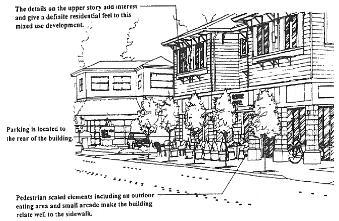
Figure 34: Building Scale Design Criteria (2)(c)(ii) and (2)(c)(iii) of this section.
This development uses a variety of techniques to present a human scale and attractive appearance.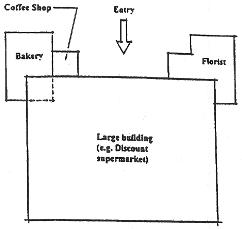
Figure 35: Building Scale Design Criteria (2)(c)(vii) of this section, Small-Scale Additions.
Clustering smaller activities around the entrance to a large building adds human scale and minimizes the large building bulk.
(Ord. 1993)
20D.40.30-040 Building Details, Materials and Colors.
(1) Intent. To provide visual interest, distinct design qualities, and promote compatibility and improvement within surrounding neighborhoods and community development through effective architectural detailing and the use of traditional building techniques and materials.
(2) Design Criteria.
(a) Use building materials and building techniques of high durability and high quality. For commercial and residential uses, the use of brick is encouraged on walls or as accents on walls. Large areas of rough-cut wood, wide rough-cut lap siding, or large areas of T-111, plywood, or similar materials are prohibited. Vinyl siding is prohibited on the ground floor of commercial buildings. Wood-textured cementatious fiber board products should be considered in lieu of wood siding for commercial buildings.
Figure 36: Details, Materials and Colors Design Criteria (2)(b) of this section.
Detailing can unify a design and lend scale and character by incorporating fascia, columns, or other distinctive detailing.
(b) Enhance buildings with appropriate details. The following elements are examples of techniques used on buildings to provide detail.
(i) Ornate Rooflines. Examples include ornamental molding, entablature, frieze, or other roofline devices.

Figure 37: Building Details Criteria (2)(b) of this section.
Human scale can be achieved with building elements that indicate or promote human activities or that are defined by human use.
(ii) Detailed Treatment of Windows and Doors. Examples include decorative lintels, sills, glazing, door design, molding or framing details around all windows and doors located on facades facing or adjacent to public streets or parks. Window sizing and treatment should be as follows:
(A) Windows should not have individual glass panes with dimensions greater than five feet by seven feet.
(B) Windows should be surrounded by trim, molding and/or sill at least four inches wide. Commercial buildings with no trim or molding should have window frames at least two inches wide.
(C) Individual window units should be separated from adjacent window units by at least six inches of the building’s exterior finish material.
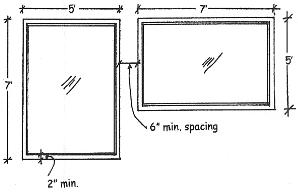
Figure 38: Building Details Criteria (2)(b)(ii) of this section.
Dimensions for individual glass panes should not be greater than five feet by seven feet, and trim around the window should be at least four inches wide.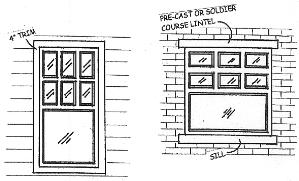
Figure 39: Building Details Criteria (2)(b)(ii) of this section.
Multiple-paned windows also help to achieve human scale. Up to 50 percent of the window area can be composed of larger panes. Lintels and sills should be incorporated in masonry and stucco clad buildings. Wood trim should be incorporated into wood clad buildings.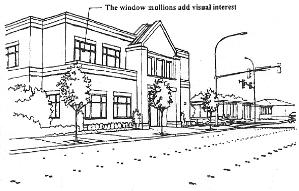
Figure 40: Building Details Criteria (2)(b)(ii) of this section.
Window mullions add visual interest.
(iii) Ornamentation. Examples include ornamental railings, grillwork, landscape guard, and trellises.
(iv) Distinctive Light Fixtures. Examples include lights with a decorative shade or mounting.
(v) Varied Building Materials. Examples include patterned masonry, shingle, brick, or stone. Also, individualized patterns or continuous wood details, such as shingles in a geometric pattern, decorative moldings, brackets, wave trim or lattice work, ceramic tile, stone, glass block, carrera glass, or similar materials.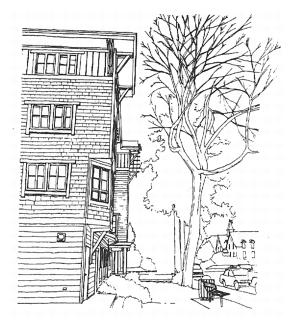
Figure 41: Building Materials Criteria (2)(b)(v) of this section.
The architectural detail and varied materials demonstrate quality design and reduce the scale of this four-story residential building by clearly articulating the bottom, middle and top.
(vi) Artwork or Decorative Paving. The artwork may be freestanding or attached to the building, and may be in the form of mosaic mural, bas-relief sculpture, light sculpture, water sculpture, fountain, freestanding sculpture, art in pavement, or other similar artwork.
(c) Avoid the use of building features or design elements that overemphasize corporate themes, logos, or colors which stand above the neighborhood and community context without adding functional or aesthetic value to the building context.
(d) High-quality and natural northwest building materials and methods should be used to accent visible building features (i.e., cedar siding, river rock, brick, etc.). Building design should incorporate and display the natural grain or texture of materials. Wood-textured cementatious fiber board is also a preferred alternative to wood products for commercial buildings.
(e) Colors used on building exteriors should integrate a building’s various design elements or features.
(f) Accent colors should use color combinations that complement each other.
(g) The use of bright colors should be avoided. Softer, muted or earth-toned colors are preferred.
(h) Use accent colors in a way to enhance or highlight building design, and not in a manner that creates clutter or otherwise detracts from building design.
(i) Colors should be compatible with the architectural character of the surrounding buildings and neighborhood. (Ord. 1993)
20D.40.30-050 Multiple Building Design.
(1) Intent.
(a) To promote integrated multiple-building development that is coordinated with and enhances the surrounding built and natural environment, and is organized to meet the goals of Redmond’s development regulations.
(2) Design Criteria.
(a) Orient buildings to retain and offer views to, from, and through the site, where identified as public view corridors or shoreline views, by taking advantage of topography, building location, and style.
(b) Where appropriate, promote variety in building design. Buildings in groups should be related by common styles, materials, roof shapes, or other common or distinctive architectural element. Contrast should be provided by the use of varied materials, color, architectural detailing, building orientation, or building type.
(c) Design the perimeter of a project to be sensitive to the scale and bulk of buildings on adjacent sites.
(d) Consider solar orientation and climate in siting buildings to promote energy conservation.
Figure 42: Multiple Building Design Criteria (2)(d) of this section.
Building and landscaping designed to capture sun in the winter and provide shade in the summer.
(e) Consider site design that minimizes clearing and grading and other disruptions to the natural character of the site.
(f) Use site and building design for safety techniques described in RCDG 20D.40.25-050 and 20D.40.30-080.
(g) Orient buildings, entries, and activities to encourage use of outdoor areas and streets.
Figure 43: Multiple Building Design Criteria (2)(g) of this section.
The open space in this site plan also provides for direct pedestrian connections to all of the buildings.
(h) Maintain adequate space between buildings to allow for landscaping or buffering. Avoid creating fragmented and unrelated landscape strips and edging.
(i) In residential developments, incorporate open space, privacy, and separation, while maintaining safety, from adjacent units through careful location of building entrances, windows, fences, walls, and landscaping.
Figure 44: Multiple Building Design Criteria (2)(i) of this section.
This multiple building project uses landscaping and carefully located windows and entrances to create a sense of privacy while maintaining sight lines for safety.
(Ord. 2340; Ord. 1993)
20D.40.30-060 Blank Walls.
(1) Intent.
(a) To reduce the appearance and mass of large walls through the use of various architectural and landscaping treatments.
(2) Design Criteria.
(a) Avoid the use of large, blank walls.
(b) All blank walls shall be treated in one or more of the following ways:
(i) Installing a vertical trellis in front of the wall with climbing vines or plant materials;
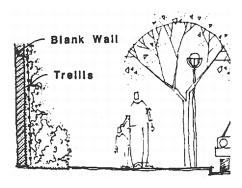
Figure 45: Blank Walls Design Criteria (2)(b)(i) of this section.
Blank walls can be screened with trellises and climbing plants.
(ii) Providing a landscaped planting bed at least five feet, zero inches, wide or raised planter bed at least two feet, zero inches, high and three feet wide in front of the wall, with plant materials that obscure or screen at least 50 percent of the wall’s surface within three years;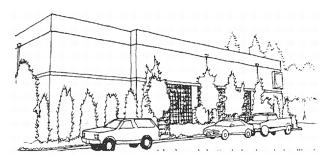
Figure 46: Blank Walls Design Criteria (2)(b)(i) and (2)(b)(ii) of this section.
A landscaped planting bed and vertical trellis with climbing vines soften the impact of this blank wall.
(iii) Providing artwork (mosaic, mural, sculpture, relief, etc.) over at least 50 percent of the blank wall surface. (Ord. 1993)
20D.40.30-070 Pedestrian Facilities and Amenities.
(1) Intent.
(a) To enhance the visual character of buildings and to improve the pedestrian environment.
(b) In addition to providing a network of pedestrian connections, the level of facilities provided to support pedestrian activities can greatly encourage the use of the pedestrian network. These criteria outline the sufficient levels of pedestrian facilities and amenities to achieve safe, comfortable pedestrian circulation.
(c) To enhance the visual character of buildings and to improve the pedestrian environment by using the architectural elements of a building and landscaping to highlight and define the entrance.
(2) Design Criteria.
(a) Mixed use and retail uses are encouraged to provide pedestrian weather protection consistent with the following:
(i) The protection should be at least 48 inches wide along at least 80 percent of the building’s front face. The weather protection may be in the form of awnings, marquees, canopies, or building overhangs.
(ii) Canopies or awnings shall have a minimum clearance of eight feet above sidewalks and should not be more than 15 feet above the sidewalk at its highest point.
(iii) The color, material, and configuration of the pedestrian coverings shall be as approved by the City. All lettering and graphics on pedestrian coverings must conform to Chapter 20D.160 RCDG, Signs. (See also RCDG 20D.40.40, Sign Design Standards).
(b) The ground story facades facing streets in mixed use and retail uses shall encourage pedestrian-friendly street front facades that consist of one or more of the following characteristics:
(i) Transparent window area or window displays along at least 60 percent of the length of the ground floor facade.
(ii) Sculptural, mosaic, or bas-relief artwork over 50 percent of the length of the ground floor facade.
(iii) Other building design or landscaping feature approved by the City.
(c) Enhance the primary public entries of all buildings by two or more of the following means:
(i) Providing weather protection, such as an awning, canopy, marquee, or other building element, to create a covered pedestrian open space.
Figure 47: Pedestrian Facilities and Amenities Criteria (2)(c)(i) of this section.
These building entries are clearly identifiable and offer weather protection.
(ii) Providing at least 100 square feet of landscaping at or near the entry.
(iii) Providing pedestrian facilities, such as benches, kiosks, special paving, bicycle racks, etc.
Figure 48: Pedestrian Facilities and Amenities Criteria (2)(c)(i), (2)(c)(ii), and (2)(c)(iii) of this section.
This courtyard entry to a large office complex is enhanced by landscaping, seating, lighting, refined architectural detailing and weather protection.
(iv) Providing a trellis, canopy, porch, or other building element that incorporates landscaping.
(v) Providing special pedestrian-scaled lighting.
(vi) Providing artwork or special pedestrian-scaled signs.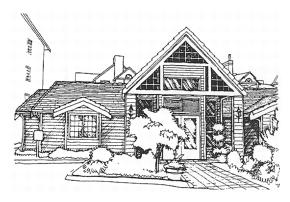
Figure 49: Pedestrian Facilities and Amenities Criteria (2)(c) of this section.
The landscaping, lighting, trellis and canopy are welcoming in this multi-family complex entrance.
(Ord. 1993)
20D.40.30-080 Building Design for Safety.
(1) Intent.
(a) To promote building designs which increase safety of employees, residents and visitors.
(2) Design Criteria.
(a) Building design should allow for informal observation of exterior semi-public and public areas including play areas, open spaces, pathways, and parking lots.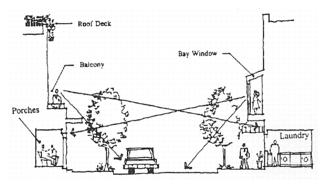
Figure 50: Building Design For Safety Criteria (2)(a) of this section.
Building elements and uses promote “informal” surveillance of public and semi-public outside areas.
(b) Areas such as laundry rooms and fitness rooms should incorporate windows to increase visibility.
(c) Doors to stairways, parking, and similar areas should be open or have windows to allow users to see through to the other side.
(d) Increase personal safety by considering the following in the design of building entries.
(i) Avoid hidden building entries and ensure good sight lines into entries.
(ii) Sufficiently light doorways and alcoves.
(e) When security surveillance devices are proposed, they should be designed to blend with the site and buildings to the extent possible. (Ord. 1993)


